At the recent FIX Trading Paris event, industry leaders gathered to explore how innovation is transforming capital markets. From cross-asset workflows to bespoke liquidity solutions, the discussions highlighted the key trends reshaping both buy-side and sell-side operations—and the challenges firms must overcome to stay competitive.
Here’s a deep dive into the insights shared during the event:
The Evolving Buy-Side Trading Desk
While technology continues to advance, the buy-side trading desk remains critical. However, its role is evolving:
- From Traditional to Data-Driven: Historically trader-oriented, buy-side desks are now embracing systematic, data-driven processes that rely heavily on real-time data and advanced analytics.
- Challenges to Overcome: Trading desks face increasing complexity in managing data, regulation, technology, and liquidity fragmentation. This demands significant investment in both human and technological resources.
- Outsourcing and Partnerships: Many buy-side firms are turning to hybrid models, leveraging partnerships and external solutions to meet these demands while optimizing costs.
Cross-Asset Integration and Workflow Innovation
One of the clearest trends is the consolidation of workflows across asset classes:
- Breaking Silos: Firms are integrating workflows across equities, fixed income, FX, and even derivatives, reducing costs and improving scalability.
- Automation and Smart Tools: Automation, ALGO wheels, and bespoke workflows are transforming execution, enabling greater agility and reducing market impact.
- Hybrid Approaches: Firms are combining internal capabilities with external expertise to create flexible, scalable solutions that meet the demands of complex market structures.
The Sell-Side Response
Sell-side desks are adapting to meet the evolving needs of their buy-side clients:
- From Single to Multi-Asset: Many sell-side desks are merging single-asset teams into cross-asset structures, offering comprehensive coverage across equities, fixed income, and FX.
- Client Education: With increased complexity, sell-side firms are taking on a greater role in educating clients, particularly around new workflows, derivatives, and automated trading solutions.
- Specialized Liquidity: Advancements in technology allow sell-side desks to focus more on high-stakes, specialized trades, creating greater value for clients.
High-Frequency Trading and Bespoke Liquidity Solutions
High-frequency trading (HFT) firms, such as XTX Markets, are playing an increasingly important role in providing liquidity:
- Low-Market-Impact Liquidity: HFT firms emphasize providing liquidity with minimal market impact, ensuring smoother executions for their clients.
- Bespoke Relationships: Direct relationships with market makers are becoming the norm, allowing buy-side firms to access customized liquidity solutions, reduce signaling risk, and improve execution quality.
Cost Pressures and Margins
Innovation comes at a price, and both buy-side and sell-side firms are feeling the financial strain:
- The Cost of Technology: Building scalable IT systems and integrating advanced tools like ALGO wheels requires significant investment. This is particularly challenging in an environment of shrinking trading margins.
- Blended Pricing Models: As electronic trading grows, firms are adopting blended rates to balance high-touch and low-touch execution costs.
The Path Forward
The FIX Trading Paris event underscored that the future of capital markets lies at the intersection of technology, collaboration, and strategic partnerships. Here’s what firms need to focus on to stay competitive:
- Invest in Automation and Workflow Innovation: Embrace tools like ALGO wheels and multi-asset workflows to enhance agility and reduce costs.
- Foster Partnerships: Build strong relationships with liquidity providers, market makers, and technology vendors to share expertise and resources.
- Balance Costs and Margins: Leverage hybrid models and innovative pricing strategies to sustain profitability while investing in the future.
As market demands grow more complex, the ability to innovate and adapt will separate leaders from laggards. By prioritizing collaboration, automation, and cross-asset integration, firms can position themselves for success in the evolving world of capital markets.
How can firms balance the demands of technology, collaboration, and cost management? Don’t forget to subscribe to our newsletter to stay informed on perspectives on the future of innovation in capital markets!


